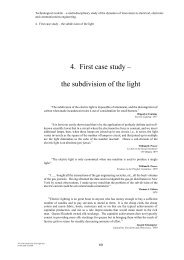Valuation Techniques for Social Cost-Benefit Analysis: - HM Treasury
Valuation Techniques for Social Cost-Benefit Analysis: - HM Treasury
Valuation Techniques for Social Cost-Benefit Analysis: - HM Treasury
You also want an ePaper? Increase the reach of your titles
YUMPU automatically turns print PDFs into web optimized ePapers that Google loves.
opinion of others can affect our individual perceptions of the value of different objects, which<br />
has implications <strong>for</strong> the contingent valuation workshop approach suggested by Hanley and<br />
Shrogen, (2002) (see section 4.2 of this paper).<br />
This research is still very much in its early stages, but neuroeconomics has the potential to<br />
provide scientifically-grounded evidence on how and if preferences are constructed and the<br />
mechanisms involved in how people perceive and state value. It is also possible <strong>for</strong> example to<br />
assess the role of attention and the framing of questions in neural determinants of choice and<br />
value (Kahneman and Frederick, 2007; De Martino, et al., 2006). There is belief that findings<br />
from neuroscience and neuroeconomics ―will soon play a large role in shaping the concepts and<br />
theories of behavioural research‖ (Kahneman, 2009); research that is central to properly<br />
understanding how people make valuations.<br />
For further sources and discussion on the role of neuroscience in economics and valuation the<br />
reader is directed to Glimcher et al. (2009), Kenning and Plassman (2005), Camerer et. al.<br />
(2005) and Braeutigam (2005).<br />
51





![AIRTO [Professor Dr Brian Blunden] - HM Treasury](https://img.yumpu.com/15492848/1/184x260/airto-professor-dr-brian-blunden-hm-treasury.jpg?quality=85)










